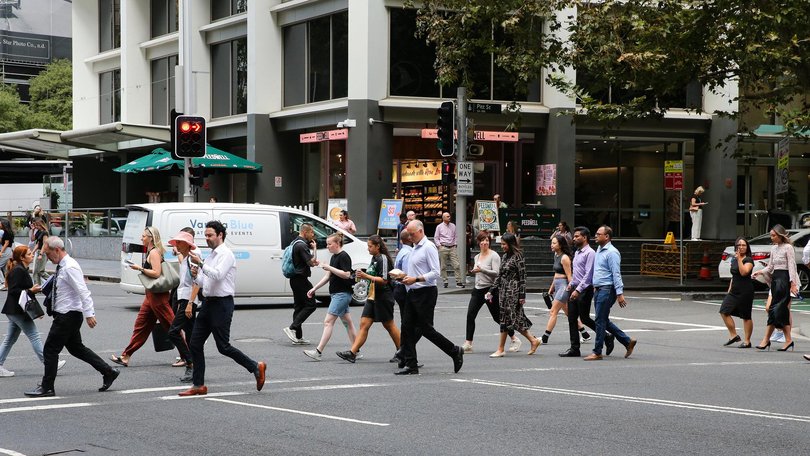ABS reports 2.7 per cent decline in job vacancies from May to August 2025

Job vacancies have declined sharply over the past three months in a stark warning flare for the Australian economy and job hunters looking for new roles.
Total job vacancies were 327,200 in August, the Australian Bureau of Statistics said on Thursday, a 2.7 per cent decrease from May.
Private sector vacancies were 288,700, a 3.4 per cent fall, while public sector vacancies lifted 2.2 per cent to 38,400.
Sign up to The Nightly's newsletters.
Get the first look at the digital newspaper, curated daily stories and breaking headlines delivered to your inbox.
By continuing you agree to our Terms and Privacy Policy.In the year to August, private sector vacancies 2.6 per cent.
Public sector vacancies have jumped 7.4 per cent.
Taken together, both public and private sectors vacancies have slid 1.5 per cent over the year, which amounts to 5000 fewer vacancies.
“The number of unemployed people for each job vacancy rose from 1.9 to 2.0, comparing May 2025 to August 2025,” ABS head of labour statistics Robert Long said on Thursday.
“This is the highest level seen since February 2021.”

Vacancies data measures how many positions employers are actively recruiting for and offers a sense of whether the labour market is tightening or cooling off.
A rise in vacancies suggests strong demand for labour, while a fall suggests a potential slowdown in the economy and a looming lift in unemployment.
Australian Industry Group chief executive Innes Willox said the numbers demonstrated Australia’s current labour market was “unsustainable”.
“Over the two years since the end of the pandemic, government-funded sectors have accounted for four in five jobs created in Australia. The normal rate is one in three,” he said.
“Private sector job creation has collapsed as the economy has slowed and many industries report recession-like conditions.
“This pattern is clearly continuing, with the private sector shedding 3.4 per cent of its vacancies over the last year while in the public sector they jumped 2.2 per cent.
“This is a leading indicator of longer-term weak private sector employment, as businesses remove vacant jobs ahead of expected weaker conditions.”

Job vacancies dropped in 11 of 18 industries in the three months to August, the ABS added.
Vacancies in the finance sector propelled the drop-off, dropping 5.2 per cent on a yearly basis and tumbling 15 per cent in the past three months.
The data release follows a sweep of dramatic job cuts across banking, including 3500 jobs at ANZ last month.
Construction also recorded sharp declines, retreating 22.4 per cent in the year to August and 12.7 per cent from May to August.
Mining vacancies presented a mixed picture, lifting 2.9 per cent over the year, but falling 13.8 per cent since May.
Vacancies in manufacturing, by contrast, are booming, rising 46 per cent across the year.
But despite that lift, vacancies in manufacturing are still 29.6 per cent lower than the peak recorded in February 2022, the ABS said.
Job vacancies in Victoria recorded the biggest tumble in the three months to August, sliding 8.8 per cent.
The Northern Territory recorded the largest increase, climbing 21.9 per cent.
Originally published as ABS reports 2.7 per cent decline in job vacancies from May to August 2025
